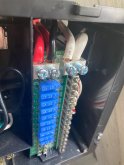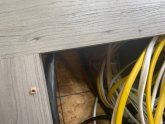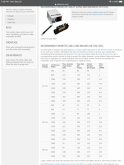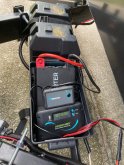So I'm thinking of wiring a 1000w inverter from the wires from the charger. (splicing into he positive to the actual panel, and neg on the bus bar) Reason being this seems to be the easiest and cheapest way, at least in my head at the moment. Plan is to switch off the charger at breaker when I want to use the inverter, so all outlets will have power, just for small fans, tv etc.....
Right now I have a wire from the panel charger input and one from the bus bar, and get 12v power whether breaker from charger is on or off, so my plan is to go from those two wires into inverter, then from inverter to its own 15 or 20amp breaker, so I'll have a 3 step process to enable the system, 1 flip charger breaker off, 2 flip inverter breaker on, 3 power on inverter, I think w/ that many steps it would be difficult to have them all powered on at the same time.
Does this make sense? Am I missing something? I know there are more sure proof ways w/ switch boxes etc, but this just makes pretty good sense to me at the moment
Right now I have a wire from the panel charger input and one from the bus bar, and get 12v power whether breaker from charger is on or off, so my plan is to go from those two wires into inverter, then from inverter to its own 15 or 20amp breaker, so I'll have a 3 step process to enable the system, 1 flip charger breaker off, 2 flip inverter breaker on, 3 power on inverter, I think w/ that many steps it would be difficult to have them all powered on at the same time.
Does this make sense? Am I missing something? I know there are more sure proof ways w/ switch boxes etc, but this just makes pretty good sense to me at the moment









